FINA Sinks To Bottom Of League On Olympic Governance With Weightlifting & Judo Feds
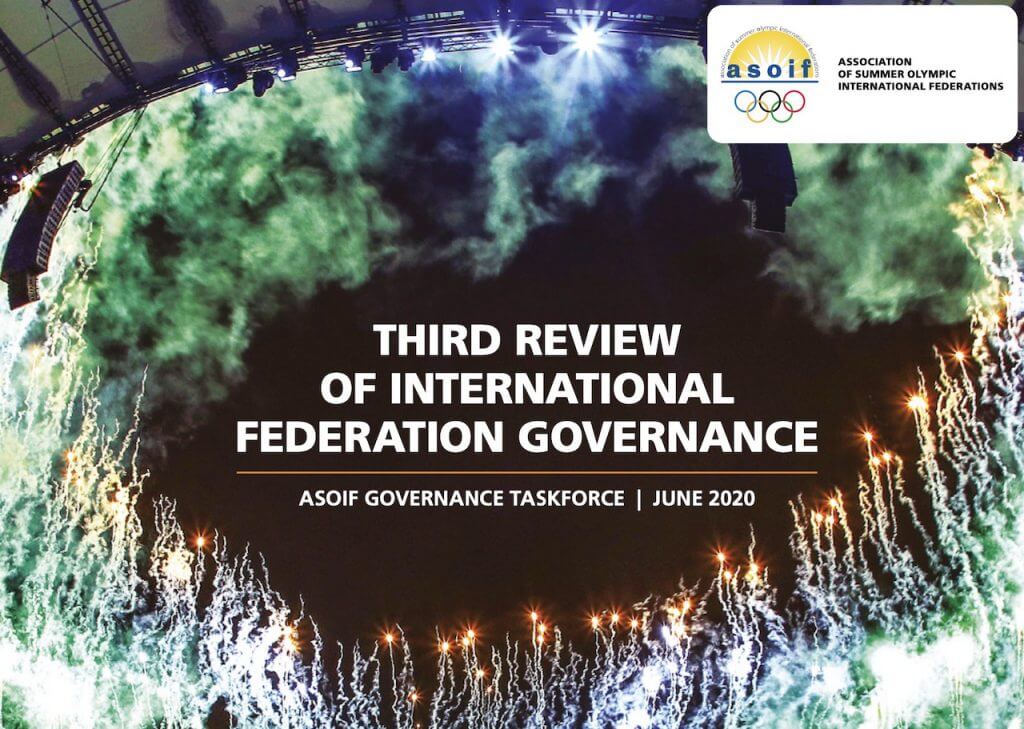
Editorial content for the 2021 Tokyo Olympic Games coverage is sponsored by GMX7.
See full event coverage. Follow GMX7 on Instagram at @GMX7training #gmx7

A review of Olympic Governance among international sports bodies has found none had equal representation of women on their ruling boards, while FINA is one of three Olympic sports federations out of 27 core summer Olympic disciplines, with weightlifting and Judo, to fall shy of a points threshold designed to measure progress.
The findings focus on a deep gender inequality that prevails in the structures of Olympic governance, including FINA, where the executive is all-male, men account for almost 70% of the 300 positions from board to basic committees and a third of all decision-making groups in aquatic sports are women-free zones.
The Third Review of International Federation Governance by the Association of Summer Olympic International Federations places FINA in a C Group of sports federations that do not stack up well on a wide range of governance issues described in the review report.
FINA also falls down on one of the key aims of the Association of Summer Olympic International Federations: integrity. While World Athletics has now facilitated the establishment of an independent Athletics Integrity Unit, FINA relies yet on an Ethics Panel selected by the FINA leadership, therefore lacking in independence, and not allowed to hear any case it chooses, under rules that give the FINA executive control over the complaints process.
Francesco Ricci Bitti, ASOIF President, notes in his opening remarks to the survey:
“We know well that when one sport is involved in controversy, it affects us all. We must therefore strengthen the integrity and credibility of our organisations and push ourselves to address both existing challenges and emerging topics. We need to maintain our collective focus and ASOIF is ready to play its part. Our mission is to protect and defend the common interests of ASOIF’s members and to provide added value to the wider Sport and Olympic Movement.”
The Gender Gap
Among key issues in the survey is a gender gap that is closing all too slowly. In the survey, men were able to stay in high office – mostly in well-recompensed voluntary positions – because more than one-quarter of governing bodies have no term limits for presidents and other elected officials.
The survey of 31 sports on the Tokyo 2020 Olympic program, conducted by the ASOIF, revealed that only one of the 31 sports achieved more than 40% of women on its board, and 18 had female representation of 25% or less.
Swimming’s Status In Olympic Governance
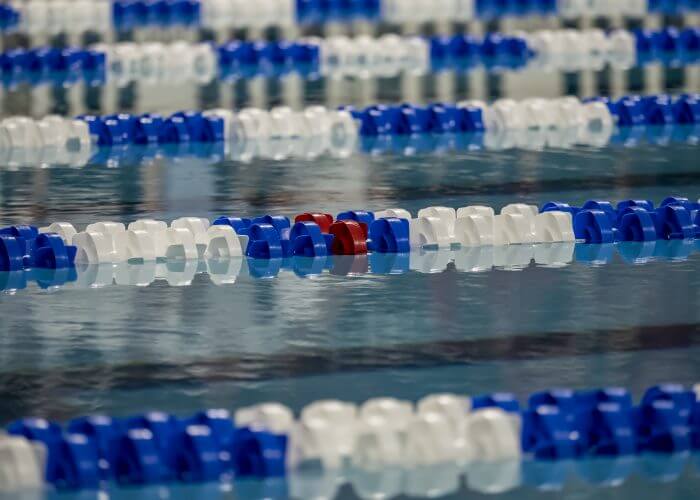
Between the lines – Photo Courtesy: Peter H. Bick
Swimming World research shows that FINA has 26 men on its ruling Bureau and three women, a gap of 89 to 11 per cent, topped by an executive that excludes women altogether. Further, more than 20% of all advisory and decision-making positions are occupied by representatives of countries with no world-class aquatic athletes, among them several nations cited by organisations such as Human Rights Watch as having has no laws prohibiting domestic violence, sexual harassment, or ‘marital’ rape.
While the only mention of rights in the survey is preceded by the word ‘broadcast’, the ASOIF review highlights the continuing gender gap in Olympic governance.
Swimming World‘s count shows the places where the gender gap is at its most extreme – where women are not represented at all – in aquatics sports:
- The Executive
- The Doping Panel
- The Ethics Panel
- Committees for: Audit; Awards; Development; Facilities; Finance; Legal; Marketing, National Federation Relations; Sports Medicine.
All of those areas have a profound impact on women swimmers and other aquatic athletes yet women are not at the table when those issues are discussed in detail and decisions taken.
Swimming’s numbers may well be said to represent “progress”, though only in relative terms, with hardly any progress made in the last 11 years since Julio Maglione, the Uruguayan now octogenarian who has been at the top table since 1984, became president of FINA.
Swimming World’s Count Of Comparative Figures for composition of governance at FINA in 1998-2000; 2005-2009; 20017-2020:
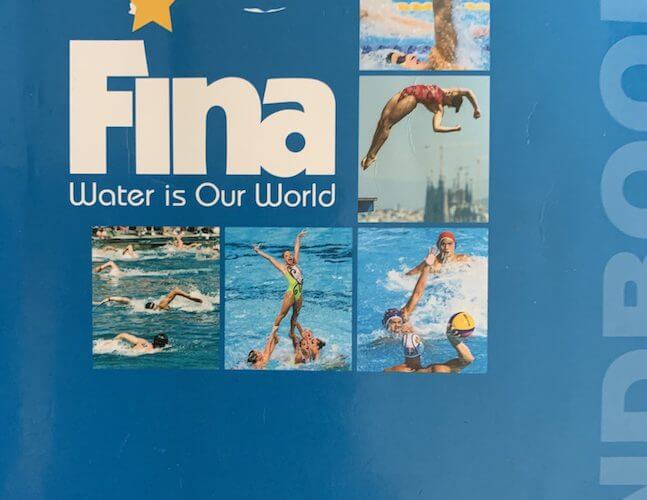
The FINA Handbook
1998-2000
- Executive: all male
- Bureau: all male
- All key committees, panels and commissions: men – 83%; women 7% (including a synchronised swimming committee with 11 women and 2 men on board, one of the men the “Bureau liaison’ or link to the top table of decision-making).
- 6 of the 11 key governance groups had no women representatives at all)
- Bureau Liaison on all committees: all male
2005-2009
- Executive: all male
- Bureau: 1 woman, 27 men
- All key committees, panels and commissions: men – 73%, women 27%
- Bureau liaison on all committees: all male
2017-2020
- Executive: all male
- Bureau: 3 women, 26 men
- All key committees, panels and commissions: men – 67%; women 33%
- Bureau liaison on all committees: 18 men, 1 woman (diving, not even the synchro/artistic committee represented upwards by a woman)
In the Depths Behind Gender Gap
The issue the ASOIF does not consider is the expertise gap: many groups in FINA governance include at least 10%, and in some cases 40% and more, of representatives who have no professional expertise in the specialist area they have been asked to make a contribution in.
With a nod to the ASOIF survey, Rowland Jack, a governance expert advising Lausanne-based group, told AP:
“It is fair to say there is still a long way to go. The amount of work being done varies considerably from one sport to another.”
At the helm of it all is the International Olympic Committee (IOC), which has four women on its 15-member executive board: a 27% representation, compared top 11% at the FINA top table.
From the IOC down through all sports federations, gender equality is a hot issue in the field of play, where gender parity is close in most sports where women and men take part in a similar or matched set of events. Athletes have a natural life span as active competitors, one where choice is the predominant driver of ‘retirement’, though not always, with choice removed by guardians even in some of the leading sports nations in the world.
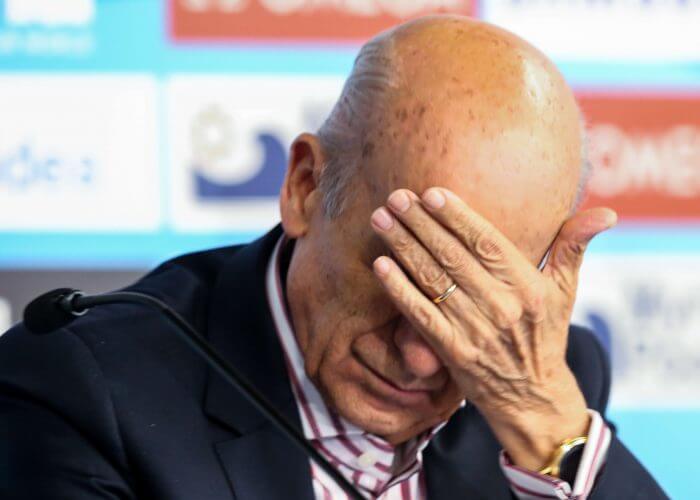
Julio Maglione, FINA president in his third term of office and on the top table since 1984 – Photo Courtesy: SIPA USA
When it comes to governance, however, terms of office have only made the agenda in recent years and the issue has faced push back and reversal of progress by decision makers. In swimming, a two-term limit for the president of FINA, for example, was reversed with a 2015 proposal that was then agreed to in order to allow Maglione to stand for office a third time in 2017.
By the time he leaves office next year, at a Congress that will not be delayed even though actual sport has had to be delayed, Maglione will have been at the top table of FINA for 36 years.
Uruguay, meanwhile, is no further up the swimming League of Nations, the best of its national records at a standard the best in the world had achieved in 1972-1976, the backstroke and butterfly records at the pace of Roland Matthes, 1967-68 and Mark Spitz between his two Olympics.
Among women, the picture is even more drastic, freestyle marks struggling to match Debbie Meyer‘s first set of world records in 1967-68, the 400IM mark at the pace of Donna De Varona in 1964.
Basically, the FINA president’s country is swimming at the pace the best in the world got to somewhere between 10 and 20 years before he made the top table of the sport he’s been making decisions on ever since.
Some Olympic bodies, the ASOIF survey shows, have presidents stay in office for two decades and more. The latest review showed nine of 31 summer sports still had no policy to curb presidential terms. ASOIF president Francesco Ricci Bitti said on a conference call with media:
“We are generally in favour of term limits. Sports has to be well governed to be credible.”
The ASOIF review is the third since 2016 in a process aiming to raise standards and transparency in the often scandal-hit area of sports governance.
The latest study showed relative progress in 24 of the 27 core Summer Games sports that achieved 120 points out of a maximum of 200 on the criteria set by the study to measure gender and equality issues.
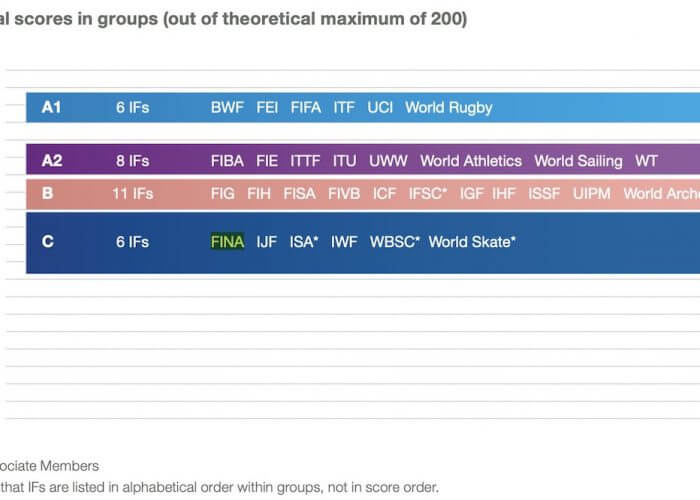
FINA at the bottom of the League on Olympic sports Governance – Photo Courtesy: Association of Summer Olympic International Federations (ASOIF)
FINA belonged to a group of three sports falling short of the 120-point measure of progress alongside the troubled International Weightlifting Federation (IWF) and the International Judo Federation.
The 20-year IWF presidency of Tamas Ajan ended in recent weeks during an investigation of suspected corruption. Boxing body AIBA did not take part in the review because it is not currently recognized by the IOC. The review concludes:
“There are still large gaps between the best and weakest (international federations).”
Equality Among Athletes Not Matches In Governance – & Not The Only Issue
The ASOIF findings were announced at a time of Olympic postponement of a Tokyo 2020 Games that will see, in 2021, the first gender equality event program in the history of swimming at the Games.
The last step in that process saw the 800m freestyle added for men and the 1500m freestyle added for women, thus creating a different kind of imbalance: where a freestyler has 10 events to go for (50, 100, 200, 400, 800, 1500 solo and then four relays all including freestyle), the specialist on backstroke, breaststroke, butterfly and medley has three key shots.
There are several big-name freestylers who have four, five and even six clear shots at medals, mainly from leading swimming nations such as the United States and Australia, courtesy of the growth in relay chances with the addition of a mixed medley event featuring two men and two women per quartet.
The bigger issues, however, lie in the depths of details alongside the gender gap figures. Olympic governance structures rely on universality and the associated voting structures to maintain the status quo. In the ranks of leadership and the decision-making process in Olympic sport are many who hail from countries with no world-class domestic athlete programs to speak of at all.
In swimming and other aquatic disciplines, that extends to governance by people who hail from countries with no women’s programs nor even, in some cases, a single female athlete of any description beyond a certain age in an era where the 25-year-old woman is an athlete with at least a couple of Olympic cycles to aim for if that is her choice.
The Olympic Governance Review – Key Findings
The aim of the review project, led by ASOIF’s Governance Task Force (GTF), is “to promote a culture of good governance within IFs and monitor progress”.
IFs were divided into groups based on their total score and for the first time for the third review.
As governance is a constantly evolving concept, the ASOIF GTF will continue with the project, distributing good practice examples drawn from the study and offering meetings with individual IFs to review specific findings. A pilot study on organisational culture in IFs is also being planned.
Summary of Key findings of the third IF governance review:
- The target of 26 out of 28 Full Members reaching an overall score of 120 (out of a theoretical maximum of 200 – 50 indicators each scored out of 4) has virtually been met with 24 out of 27 that took part above the threshold, two very close to that level and one below it.
- Nearly all of the IFs show improvements since the most recent assessment in 2017-18. Eighteen of the 31 IFs have improved by 20 points or more, a further nine have gained more than 10 points.
- The four Associate Members that participated in the study have also advanced, albeit at uneven rates, with two now scoring well above 100, one close to that level and one below it.
- The Transparency section was the highest-scoring overall, with high average scores across the full set of IFs. E.g. 25 out of 31 IFs published at least one set of annual, externally audited accounts, an increase from two years ago. Sixteen IFs published some type of policy regarding allowances and expenses for officials and senior staff – compared to nine IFs in 2018.
- Regarding confidential reporting mechanisms for whistle-blowers, 15 IFs provided at least an email address or online reporting form offering anonymity. A further 11 could demonstrate that a system was in place and that action had been taken in response to reports.
- One IF had a board that was more than 40% composed of women; 12 IFs had between 25% and 40% female representation, plus rules or a policy to encourage better gender balance; 10 IFs were between 15% and 25%; and 8 IFs had a board with the proportion of women below 15%.
- Fifteen out of 31 IFs were able to show that they had a safeguarding policy consistent with IOC guidelines that was being implemented. Eleven had a policy but it is very recent. Five IFs had not yet adopted a policy but were working on one.
- IFs are paying growing attention to sustainability issues. Sixteen IFs implemented specific measures, up from nine in the 2017-18 review.
- The lowest-scoring indicator is the one on term limits, partly because as many as nine IFs have no term limits for elected officials and therefore scored 0.
- IFs with term limits demonstrate higher average scores.
- Similarly, a number of IFs do not have an audit committee of any description and some of those that are in place lack independent members.
- The other low scoring indicators on the list might be said to be among the “harder” topics for smaller IFs to implement, requiring more work: provision of legacy programmes, tendering exercises and monitoring the use of distributed funds.
- The study has shown that there is a correlation between higher scores in the assessment and IFs with greater resources in terms of staff and financial revenue, but there are also exceptions and it is possible to achieve high standards with under 20 staff.




